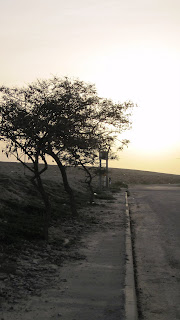
Team Rothberg
For Kabbalat Shabbat, I went to Tsfat. Tsfat is the mystical city in the North of Israel where Kabbalah (Jewish mysticism) originates from. Because of its mystical characteristics, the people who live there are mostly Hassidic Jews and artist hippies. We arrived too late on Friday to do any artsy shopping but we were able to explore the town for a while.

Safed is one of the four holy cities in Israel (along with Jerusalem, Hebron and Tiberias). One of the most beautiful sites in Tzfat is the Tzfat cemetery. Many famous rabbis were buried here. One of the most famous is Rabbi Isaac Luria (ARI) who is one of the most famous Kabbalists of all time. Because there are so many famous Rabbis buried there, many Hassidic Jews come and pray and pay tribute to these rabbis very often.

Shabbat was incredible. We went to this synagogue called the Carlebach Synagogue. This is the place to be on Friday night. It is a small synagogue but everyone (men and women) were singing and praying really loudly and with a lot of Spirit. It really encapsulated the atmosphere of the town.

We stayed at a Hostel run by Chabad. They set us up for dinner with a Chabad Rabbi and his wife. The conversations at dinner were very interesting, I had not been exposed to this branch of Judaism before and it was interesting to see that even within my religion, there were views and issues I had never contemplated before.
Since everything is closed on Shabbat, on Saturday, we went out for a hike. The country side of Tsfat is beautiful. Tsfat is located on top of a mountain so the views are incredible. The North of Israel looks so different from the South.

Our little Tiual ended up being an epic walking journey. We saw the Kineret and decided that that would be a feasible walk. Apparently it is a good 40k away from Safed. Unfortunalty we realized this about 20k into the walk. We had to turn around and walk back, this time up the mountain. It was an absolutely exhausting walk but the views were so beautiful it was well worth it.

My plans for the upcoming weeks: I will be having Passover Seder at Nitsan's family's house. Then on Wednesday I am heading off to Egypt. I am going to Sinai and Cairo (doing the reverse Exodus)
Hag Semeach everyone!














